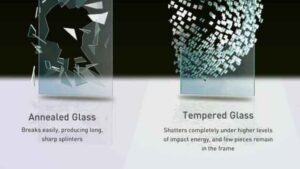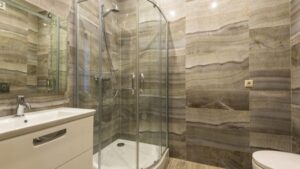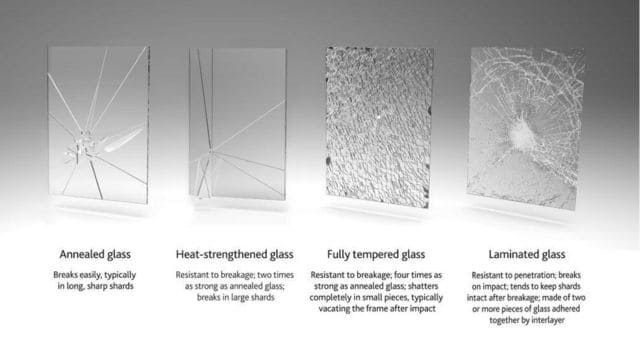What is Annealed Glass?
Have you ever stopped to admire the sparkling clarity of a windowpane or the smooth surface of a picture frame? Chances are, you’re looking at annealed glass! This versatile type of glass is the most common variety used in everyday applications, from our homes to our workplaces.
Imagine glass as a liquid that’s been rapidly cooled. This rapid cooling can create internal stresses within the material, making it more prone to breaking. Annealing is a controlled cooling process that helps to relieve these stresses, resulting in a stronger and more stable piece of glass.
Contact us today, to learn more on Annealed Glass!
If you are a construction company looking to partner with Toronto’s #1 glass installation company to bring your clients/customer enhanced options, contact us today!
Don’t forget to follow us on Instagram, to view our work! Click here.
To view all our products and services, click here!
📧 info@luxglass.com
☎️ 416-897-0767
🌐 luxglass.com
The Annealing Process

Unlike tempered glass, which undergoes a heating and rapid cooling process, annealed glass is simply cooled down slowly and strategically at the glass manufacturer’s facility. This controlled cooling allows the glass molecules to arrange themselves in a more organized way, reducing internal stress and making the glass less likely to shatter.
Think of it like this: Imagine a group of people rushing through a doorway. If everyone tries to squeeze through at once, there’s bound to be chaos and pushing. But if they enter in an orderly fashion, the flow is smoother and safer. The annealing process is like calming down the excited glass molecules, ensuring they settle into a more stable structure.
Properties of Annealed Glass

Annealed glass offers several key properties that make it ideal for a wide range of applications:
● Clarity: Annealed glass boasts excellent clarity, allowing for clear views and unobstructed light transmission.
● Versatility: It can be cut, drilled, polished, and shaped into various forms, making it highly adaptable for different projects.
● Affordability: Compared to tempered glass, annealed glass is generally more affordable due to the simpler manufacturing process.
Advantages of Annealed Glass
There are several advantages to choosing annealed glass for your project:
● Cost-effective: As mentioned earlier, annealed glass is a budget-friendly option compared to tempered glass.
● Easy to fabricate: Its ability to be cut, drilled, and shaped with ease makes it ideal for projects requiring customization.
● Excellent clarity: The high level of clarity allows for unobstructed views and natural light transmission.
● Wide range of applications: Annealed glass is suitable for various purposes, from windows and picture frames to tabletops and shelves.
Disadvantages of Annealed Glass
While annealed glass offers many benefits, it’s essential to be aware of its limitations:
● Lower breaking strength: Compared to tempered glass, annealed glass is more susceptible to breaking upon impact.
● Shatters into large shards: When broken, annealed glass shatters into large, sharp pieces, posing a potential safety hazard.
● Not suitable for safety-critical applications: Due to its lower breaking strength, annealed glass is not recommended for applications where safety is paramount, such as shower doors or glass railings.
Applications of Annealed Glass
The versatility of annealed glass makes it a popular choice for a variety of applications in both residential and commercial settings.
Residential Uses:
● Windows: Annealed glass is the most common type of glass used in windows, offering excellent clarity and affordability.
● Shelving: Glass shelves made from annealed glass add a touch of elegance and can showcase decorative items.
● Picture frames: The clear and smooth surface of annealed glass makes it ideal for framing photos and artwork.
● Mirrors: Most standard mirrors utilize annealed glass as the reflective surface.
● Cabinet doors: Glass cabinet doors allow for a more open and airy feel in kitchens and bathrooms.
● Tabletops: Annealed glass can be used to create stylish and functional tabletops for coffee tables, side
Commercial Uses:
● Display cases: Annealed glass provides excellent visibility for showcasing products in retail stores and museums.
● Partitions: Glass partitions can create separate workspaces while maintaining a sense of openness in an office environment.
● Interior doors: Glass doors can add a modern touch and allow for natural light flow within a commercial building.
● Signage: Annealed glass can be used for clear and attractive signage in lobbies and other public areas.
● Picture windows: Large picture windows made from annealed glass offer stunning views and enhance the visual appeal of commercial establishments.
Annealed vs. Tempered Glass: Choosing the Right Option
When choosing between annealed and tempered glass, it’s crucial to consider the specific application and prioritize safety versus affordability.
● Choose annealed glass if: Clarity, affordability, and ease of fabrication are your primary concerns. The application does not involve high impact risk or safety-critical areas.
● Choose tempered glass if: Strength, safety, and resistance to breakage are paramount. The application involves potential impact, such as shower doors, glass tabletops, or building exteriors.
Can You Cut Annealed Glass?
Absolutely! One of the significant advantages of annealed glass is its ease of fabrication. Unlike tempered glass, which shatters if cut after processing, annealed glass can be cut, drilled, polished, and shaped into various forms before installation. This makes it ideal for projects requiring customization and specific dimensions.
Safety Considerations with Annealed Glass
While annealed glass is generally safe for many applications, it’s important to be mindful of its breaking behavior. When broken, annealed glass shatters into large, sharp shards that can cause serious injury. Here are some safety considerations:
● Tempered glass for safety-critical applications: As mentioned earlier, for areas with a high risk of impact, such as shower doors, glass tabletops, or building exteriors, always opt for tempered glass for enhanced safety.
● Safety film for added protection: You can consider applying a safety film to annealed glass surfaces. This film helps hold the glass together in case of breakage, minimizing the risk of injuries from sharp shards.
● Proper installation and handling: Ensure annealed glass is installed and handled by professionals experienced in working with glass materials.
Where to Buy Annealed Glass
Annealed glass is readily available at most glass suppliers and home improvement stores. These vendors can provide you with various sizes and thicknesses of annealed glass to suit your project needs. They can also offer cutting and shaping services if required.
FAQs About Annealed Glass
1. Is annealed glass the same as float glass?
Yes, annealed glass is often referred to as float glass. Float glass is the most common type of annealed glass produced using a float process where molten glass is spread over a molten tin bath, creating a flat and smooth surface.
2. Is tempered glass stronger than annealed glass?
Yes, tempered glass is significantly stronger than annealed glass. The tempering process involves heating and rapidly cooling the glass, creating internal stresses that make it four times stronger and more resistant to breakage. When tempered glass breaks, it shatters into small, blunt pieces, minimizing the risk of injury.
3. Can I use annealed glass for a shower door?
No, annealed glass is not recommended for shower doors due to its lower breaking strength and potential for shattering into large, sharp pieces. Tempered glass is the safer option for shower doors due to its increased strength and tendency to break into small, blunt fragments.
4. How thick should annealed glass be for a shelf?
The thickness of annealed glass required for a shelf depends on the size and weight it will be supporting. Generally, thicker glass is needed for larger shelves or those holding heavier objects. It’s recommended to consult a glass professional to determine the appropriate thickness for your specific shelf application.
5. Can I paint annealed glass?
While you cannot directly paint annealed glass, you can achieve a painted look using various techniques. These include applying a film with a painted design, using frosted or tinted glass options, or adhering vinyl decals to the glass surface

